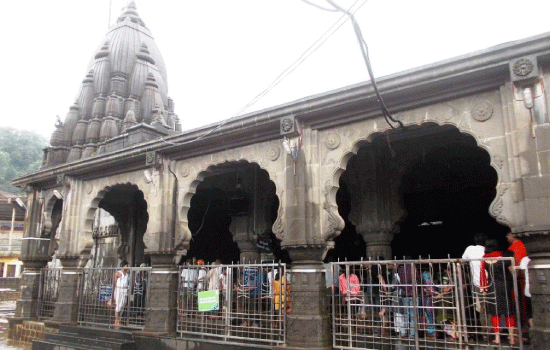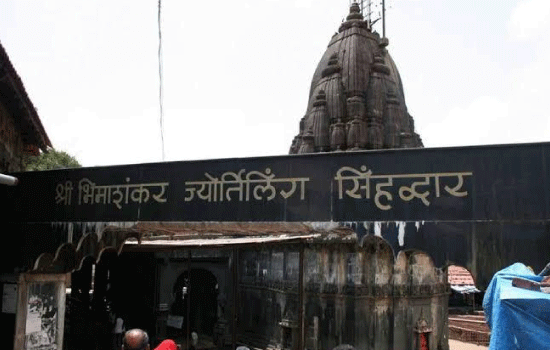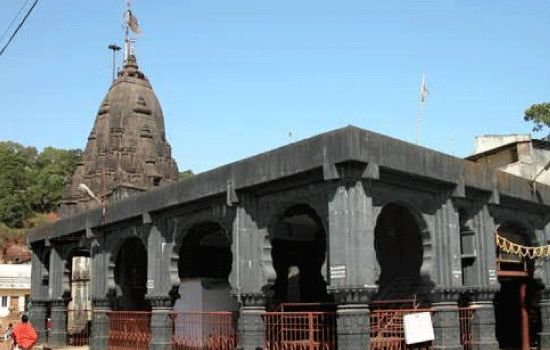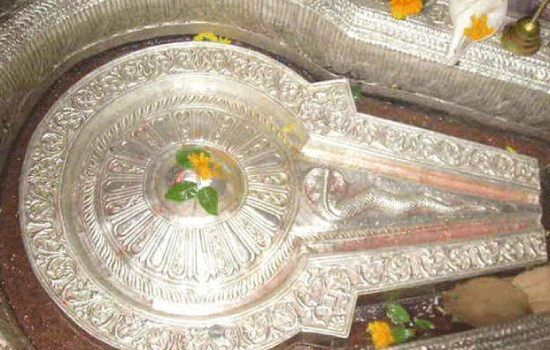Bhimashankar TempleIn Hinduism, there are three main gods who form the trinity of power Brahma, Vishnu and Mahesh. All of the three have their own significance in religion. However, two out of these three, i.e., Vishnu and Shiva, are being worshipped all over India and Lord Brahma has just one temple dedicated to him in Pushkar. Shiva is worshipped in his human form as well as in the form of linga. 
According to the religious texts of the Hindu religion, there is a total of 64 Jyotirlinga in India, out of which 12 Jyotirlinga held high sacred and significant. These 12 Jyotirlinga are known as Maha Jyotirlinga or The Great Jyotirlingas. These 12 Jyotirlinga are Mallikarjuna at Srisailam, Andhra Pradesh, Somnath in Gujarat, Mahakaleswar at Ujjain, Madhya Pradesh, Kedarnath in Uttarakhand, Kashi Vishwanath at Varanasi, Uttar Pradesh, Bhimashankar in Maharashtra, Omkareshwar in Madhya Pradesh, Trimbakeshwar in Maharashtra, Nageshwara Jyotirlinga at Dwarka in Gujarat, Vaidyanatha in Jharkhand, Rameshwaram in Tamil Nadu, Grishneshwar in Maharashtra. Bhimashankar temple in Pune, Maharashtra, is a Jyotirlinga shrine. It is located in the Sahyadri Mountains in the Ghat region. This is also a source of the Bhima River that flowed southeast and merged with the river Krishna. There are two more Jyotirlinga shrines in the state of Maharashtra that includes Grishneshwar and Trimbakeshwar. HistoryBhimashankar temple is considered among the ancient temples of India. It is located in the village of Bhorgiri in Maharashtra, which is 125km away from Pune. Though the contemporary structure of the temple appears to be of recent origin, the Bhimashankar shrine has its reference in the texts that date back to the 13th century. Even the river Bhimarathi is being mentioned in the religious texts. This ancient shrine of shiva linga is believed to be erected over a Swayambhu Lingam, which means that Shiva Lingam self emanated. As per the local story of the area, Bhimak was a king of the Sun Dynasty who was a worshipper of Lord Shiva and did penance for the pious river. Lord Shiva was pleased and granted him his wish and named it Bhima. The Jyotirlinga is named after the name of the river and another name of Lord Shiva, i.e., Shankar. The Jyotirlinga is exactly in the Center of the sanctum sanctorum of the temple I.e. Garbha Griha of the temple. The current structures of the temple were built in about the 18th century mostly by the rulers and nobles of the Maratha Empire. Mythology
According to the Hindu religious texts of Shiva Mahapurana, once there was an argument between the Hindu God of Creation Brahma and the Hindu God of Protection Vishnu about the creation. Shiva decided to test these two and pierced a three world as a large endless pillar of light called Jyotirlinga and asked them to find the end of the light. Brahma and Vishnu parted their ways in search upwards and downwards, respectively, to find the end. Vishnu accepted his defeat as he understood this source of light is infinite, but Brahma lied about finding its end. After this, Shiva appeared as the second pillar of light. He cursed Brahma that there would be no place for him in any ceremonies we here as Vishnu would be worshipped till the end of eternity. Jyotirlinga, therefore, is considered the supreme partless reality out of which Shiva partly appears. So all the Jyotirlinga are believed to be the places where Shiva appeared as a fiery column of light. The temple is also associated with the legend of Tripurasura (associated with the invincible flying citadels, the Tripuras). He was the devotee of Lord Shiva who prayed and did penance to please Lord Shiva to grant his wish. Lord Shiva, pleased by his penance, granted him his wish of immortality on the condition that he would work for the welfare of the people. Still, Tripurasura broke all his promises and started harassing people and other gods. Lord Shiva attained a huge colossal form of Rudra and slew Tripurasura. After the fight, Lord Shiva took a rest in the hills of Sahyadri. As he sat, his sweat started pouring and formed various small streams, which formed a pond. It is believed that the river Bhima has its origin in this very pond. The people and devotees of the area requested the god to reside there forever, and Lord Shiva fulfilled their wish by staying there in the form of Jyotirlinga. It is also believed that Shiva has taken abode in the form of Bhimashankar on the crest of Sahyadri Hills upon the requests of the gods. Construction and Architecture
Though the temple structure is not very old, it is a composite of nee and old structures of the Nagara style of temple architecture. The temple dates back to the 13th century, although Nana Phadnavis built the Sabhamandap in the 18th century. It is said that the great Maratha ruler Chhatrapati Shivaji Maharaj has made an endowment to facilitate worship in this temple. The ancient Vishwakarma sculptors showed their excellence through their skills by intricate carvings of interspersed human figurines and divine beings adorning pillars and the temple's doorframe. There is a unique Roman-style bell in between the two pillars in front of the Shani temple, which has a carving of mother Mary with Jesus. This bell was stored here by the brother of Bajirao Peshwa I, Chimaji Appa, who collected 5 large bells from Vasai Fort after winning a war against the Portuguese. Nana Phadnavis built a big bell in the Hemadpanthi structure. A Pune-based trader Antaji Nayik Bhinde built a court hall in 1437. He also built the Gopura Shikhara (tower) of the temple. Within the premises of the temple, there is also a small Shanidev shrine called Shanaeshwara. At the entrance of the temple, there is an idol of Nandi, the vehicle of Lord Shiva. There is also the temple of Kamalaja near the Bhimashankar Temple. Kamalaja is considered to be the incarnation of Parvathi, the consort of Lord Shiva, who aided him in the battle against the demon Tripuraasura. There are also Shrines dedicated to Shaakini and Daakini; they were the Shiva Ganams who assisted Shiva in the battle against the asur. It is also said that Maha Muni Kaushika has done penance (Tapas) here. Mokshakunda Thirtham is the place where he bathed which is located right behind the temple of Bhimashankar. Festivals
There are many festivals that are celebrated in the temple; some of them are : Kartika PurnimaIt is celebrated in the month of November or December on full moon day, which falls on the fifth lunar day of the month of Kartika according to the Hindu calendar. Arrangements are done for special Puja and Aarti. It is believed that Lord Shiva slew the demon Tripurasura in all three realms on this day. Maha ShivaratriThis is generally celebrated in the month of February, which falls in the month of Magh according to the Hindu calendar on the day of Krishna Paksha Chaturdashi. It is one of the special festivals of the temple where special arrangements are made for the Rudra Abhisheka, puja, and aarti. It is believed that Lord Shiva and Goddess Parvati married on this day. The whole temple is decorated with colorful flowers. A lot of devotees fast and visit the temple on this occasion to worship jyotirlinga to gain blessings from Lord Shiva. A five-day huge fair is also organized near the temple, which also attracts a lot of people from the nearby villages. Ganesh ChaturthiIn this festival, Lord Ganesha is worshipped, who is the son of Lord Shiva and Goddess Parvati. It is considered to be the birthday of Lord Ganesha. It is one of the most celebrated festivals in the state of Maharashtra, and here also, it is celebrated with great enthusiasm, splendor, and grandeur. DiwaliIt is celebrated in the month of October or November with great show n pomp. The temple is decorated with flowers and diyas on this occasion. SignificanceThough Bhimashankar is one of the ancient temples of our country, it doesn't have very grand architecture or anything special about its structure. Still, religiously it has a significant place in Hinduism as one of the 12 main jyotirlingas out of 64 is situated here. A lot of devotees from around the country visit the temple every year. The surrounding of this temple is also splendid with beautiful scenery of hills and greenery. Devotees can also visit the Bhimashankar Wildlife sanctuary, Bhorgiri Fort, Ahupe waterfall, and can go on a Bhimashankar trek.
Next TopicShore Temple
|
 For Videos Join Our Youtube Channel: Join Now
For Videos Join Our Youtube Channel: Join Now
Feedback
- Send your Feedback to [email protected]
Help Others, Please Share










